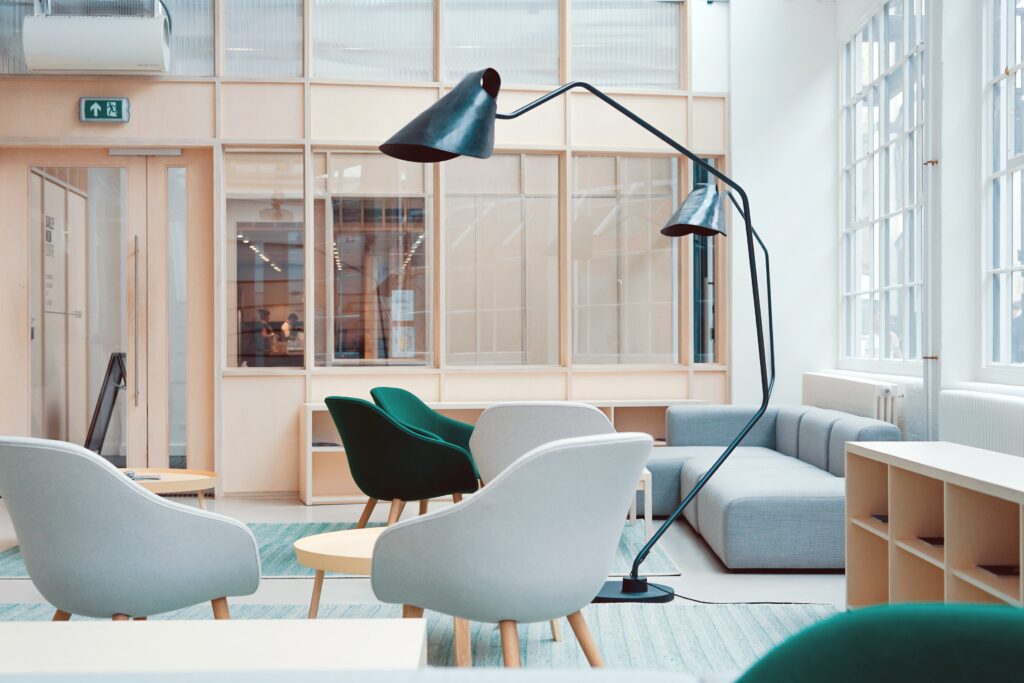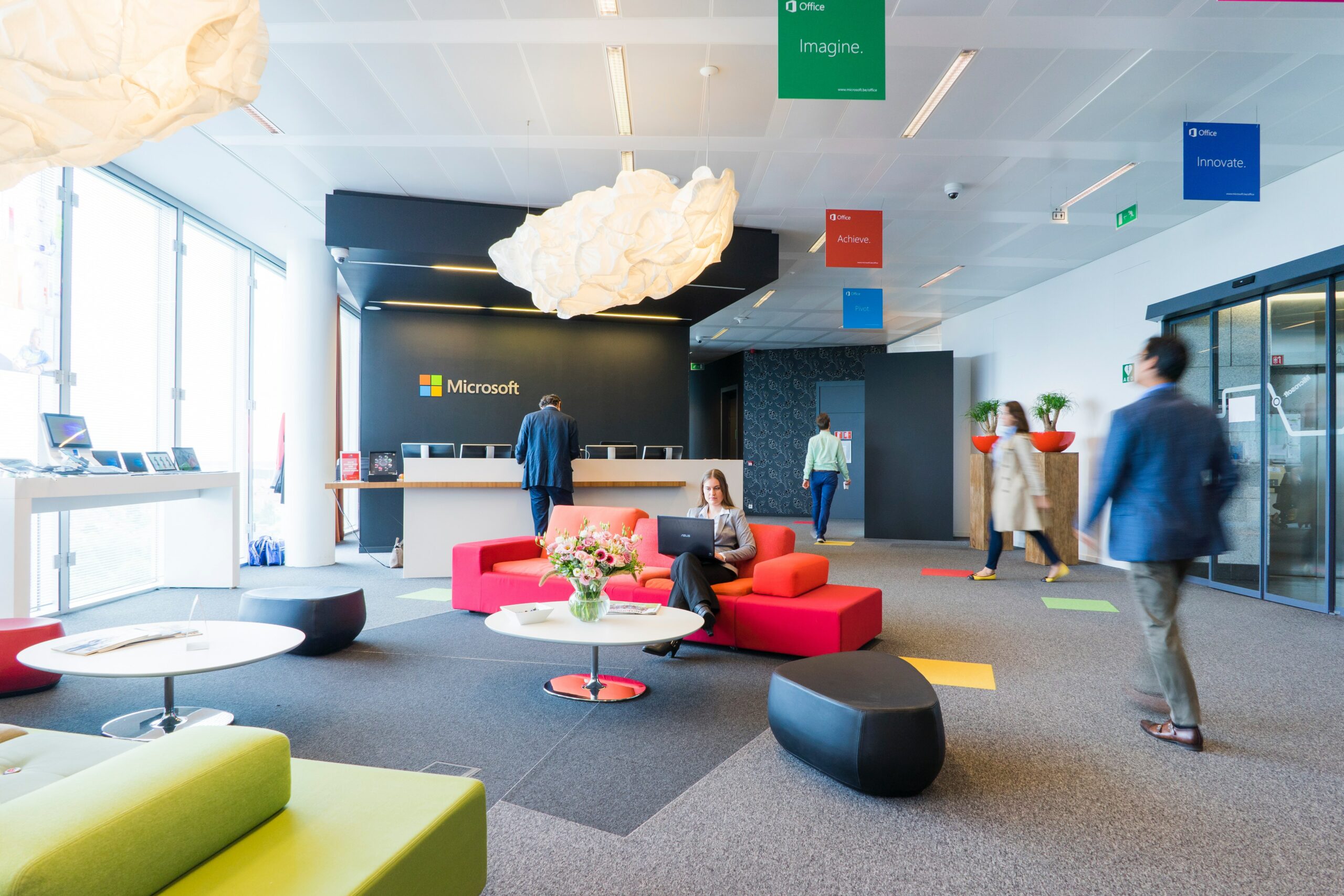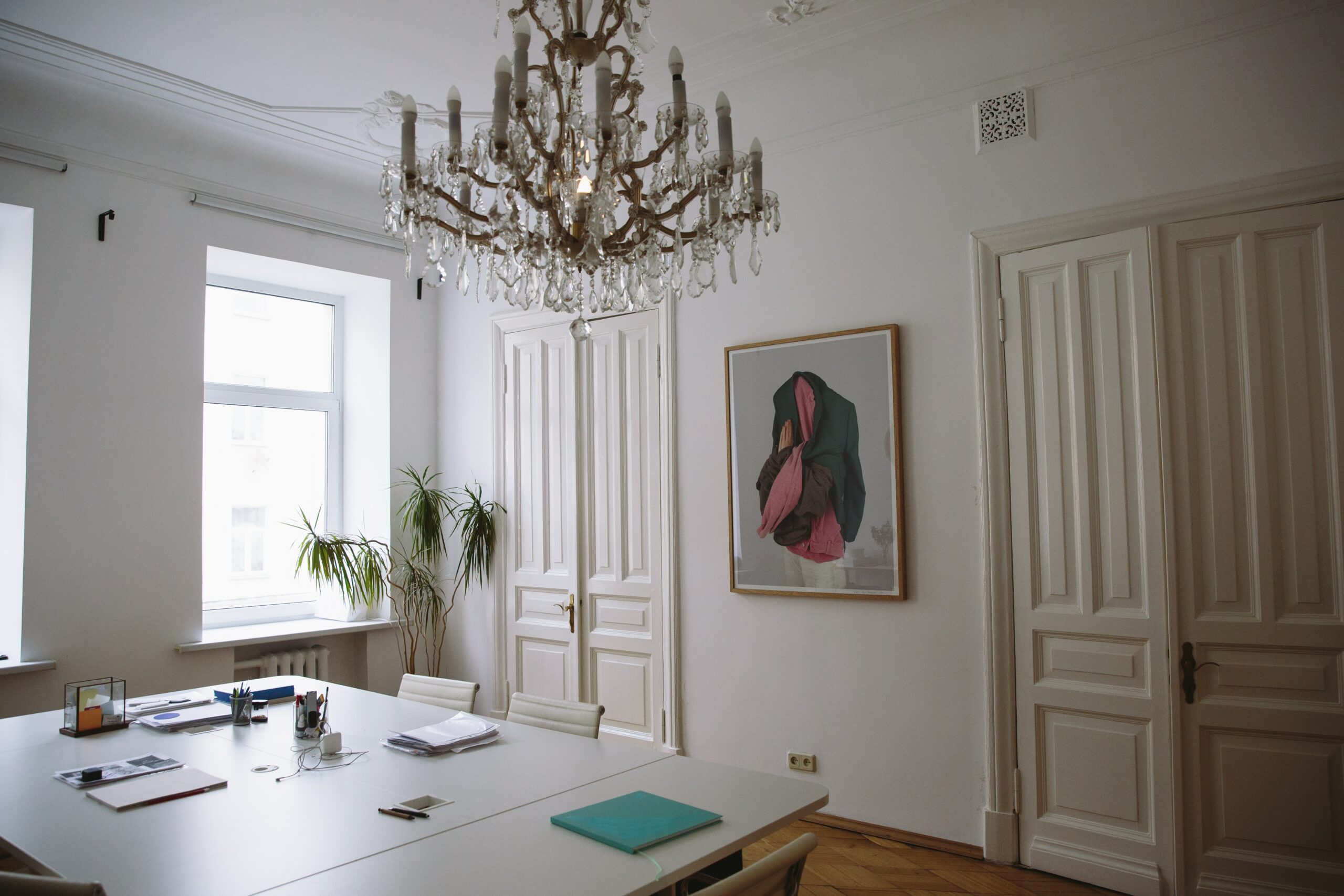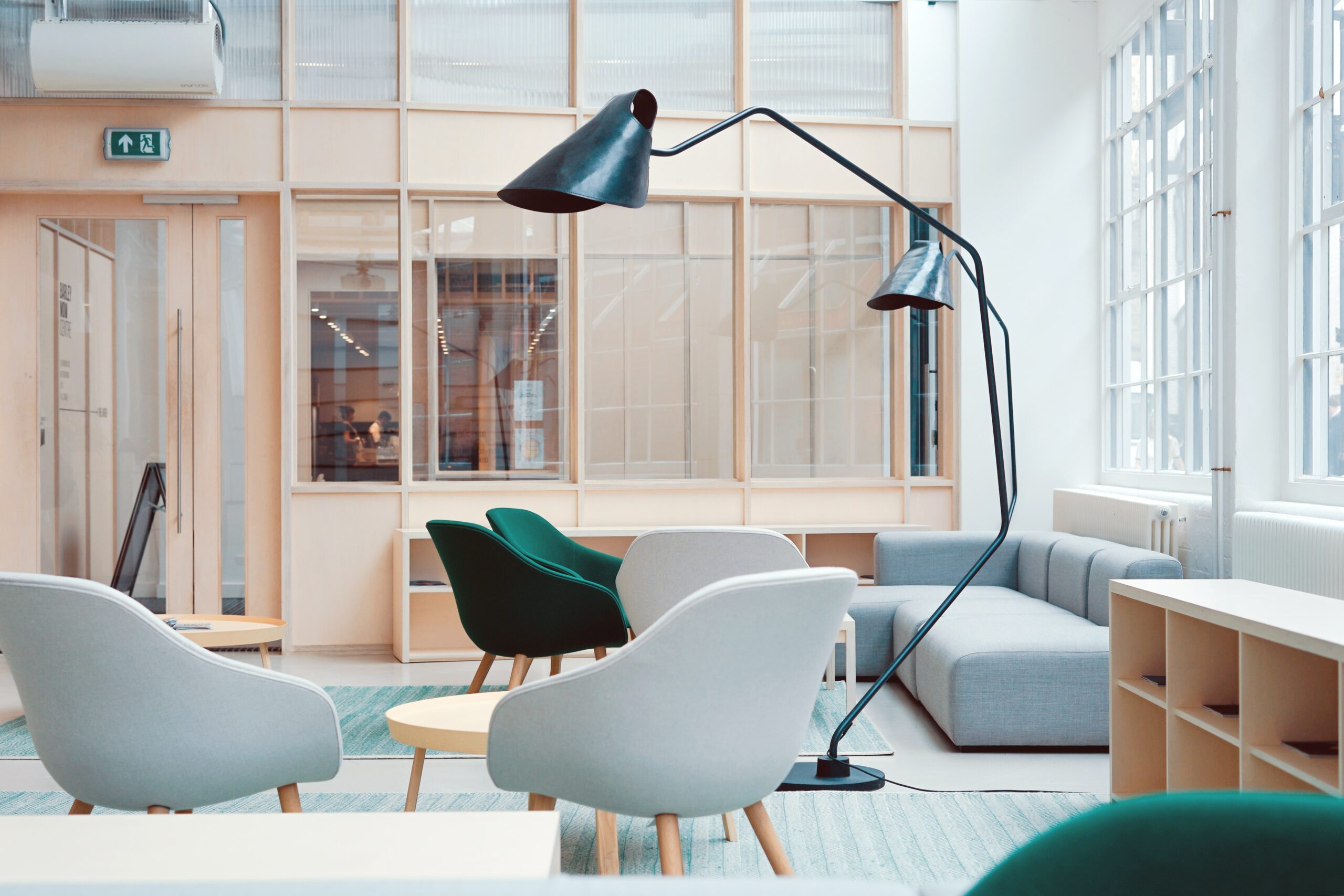Home Away From Home: The Rise of Residential Features in Commercial Offices

At first glance, you may think you've stepped into a swanky city apartment, but you'd be wrong. Welcome to the new age of commercial offices, where comfort meets productivity and office spaces feel more like home than ever before.
This article delves into the emerging trend of incorporating residential features into commercial office spaces. We'll explore the reasons behind this shift, its benefits, and how it's changing the way we work. Grab a cuppa and get comfortable - you're about to discover the future of office design.
The Shift Towards Residential Features in Offices
Over the last decade, offices have continued to evolve from sterile and functional spaces to environments that are more relaxed, inviting and tailored to the needs of employees. This shift has been largely driven by millennials who want to find balance in their work lives rather than just focusing on productivity.
The 'resimercial' trend combines the comfort of home with the functionality of an office space. The term itself is a combination of 'residential' and 'commercial', and it describes the trend of incorporating features typically found in a home into an office.
What Does 'Residential' Mean in an Office Context?
In the context of an office, 'residential' refers to the incorporation of features that create a homely, comfortable environment. These features range from softer lighting and comfortable furnishings to fully-equipped kitchens and relaxing recreational areas.
It's about creating an environment that encourages relaxation and social interaction alongside productivity. It's not about blurring the lines between work and home, but rather enhancing the workspace to reflect the comfort and ease associated with home, promoting a happier, healthier, and more productive working environment.
Popular Residential Features in Offices
So, what exactly are these residential features?
Comfortable Seating and Lounge Areas
Comfortable seating and lounge areas are at the heart of the 'resimercial' trend. No longer are offices strictly about rows of desks and rigid chairs. Today, you're just as likely to find plush sofas, bean bags, and cosy armchairs nestled in corners, providing a more casual, relaxed ambience for employees.
Breakout areas, equipped with comfortable seating arrangements, create an inviting space for colleagues to unwind during breaks, collaborate informally, or even work in a more relaxed setting.
This not only provides a change of scenery but also allows for a more dynamic and flexible work environment. The right seating can make all the difference in turning an ordinary office into a space that feels like a 'home away from home'.
Fully Equipped Kitchens and Advanced Kitchen Gadgets
Fully-equipped kitchens are another key feature of the 'resimercial' trend. Gone are the days when office kitchens were minor afterthoughts featuring a kettle, microwave, and a fridge stocked with milk and half-eaten sandwiches. Today's office kitchens are designed to resemble the ones you’d find in modern homes, with high-end appliances, chic cabinetry, and even kitchen islands for casual meetings or lunch breaks.
A standout feature of these kitchens is the boiling water tap, an advanced gadget that delivers piping hot water at the twist of a knob. This isn’t just about convenience when brewing a quick cuppa – it's a demonstration of how offices are adopting residential comforts to create a more welcoming and efficient environment.
These high-tech kitchens foster a sense of community, encouraging employees to partake in communal cooking or engage in casual chit-chat over a cup of coffee. More than just a place to grab a quick snack, these spaces are becoming the social hubs of modern offices.
Outdoor Spaces for Relaxation and Socialising
Outdoor spaces are becoming increasingly popular in the modern office setup. From rooftop gardens to spacious balconies filled with greenery, these areas provide a refreshing change of environment, encouraging employees to step away from their desks and enjoy some fresh air. Much like a home garden or patio, these spaces can be used for relaxation, informal meetings, or even al fresco dining.
Often equipped with comfortable seating and Wi-Fi connectivity, they offer a unique blend of business and leisure, reinforcing the 'resimercial' trend. These outdoor spaces not only boost employee wellbeing but also serve as a visual reminder of the organisation's commitment to sustainability and green living.
Benefits of Residential Features
Incorporating residential features into commercial offices offers a number of benefits:
- Increased Employee Satisfaction: The comfort and convenience of a home-like environment can help increase job satisfaction by making employees feel more relaxed and valued.
- Boosted Productivity: A comfortable and relaxed environment can boost productivity by reducing stress and promoting wellness, leading to happier and more efficient employees.
- Enhanced Collaboration: Informal lounge areas and communal kitchens can stimulate creativity and foster collaboration by providing relaxed spaces where employees can connect and exchange ideas.
- Reduced Employee Turnover: The pleasant and home-like work environment can contribute to decreased employee turnover, as the employees feel more comfortable and satisfied in their workspace.
- Attracting Talent: An office that feels like home can be a strong selling point for prospective employees, making it easier for companies to attract and retain talent.
- Promoting Work-Life Balance: By incorporating features typically found in a home into an office, organisations can help employees strike a better work-life balance and improve their wellbeing.
Challenges of Residential Office Design
While 'resimercial' design offers numerous benefits, it's not without its challenges:
- Cost: Incorporating residential features into the office environment can be a significant financial investment. High-end kitchen appliances, comfortable furniture, and the creation of outdoor green spaces can drive up costs.
- Space Limitations: Not all office spaces are built to accommodate residential features. Space constraints can pose a real challenge, particularly in city-centre locations.
- Maintenance: Residential features such as fully equipped kitchens and plush furnishings require regular cleaning and maintenance, which can add to operational costs.
- Distraction: While 'resimercial' designs aim to boost productivity, there's a risk that comfortable and homely environments could lead to distraction, reducing employee focus and productivity.
- Blurring Boundaries: With the workplace feeling more like home, there could be a risk of blurring the boundaries between work and personal life, leading to overwork and burnout.
- Design Challenges: Striking the right balance between providing comfort and promoting productivity can be a challenging task for designers. Too much comfort can lead to a relaxed environment that may not be conducive to work.
Balancing Privacy and Openness
Striking the right balance between privacy and openness is a significant aspect of 'resimercial' office design. Much like a home, an office needs to cater to a variety of needs and moods. Open spaces foster collaboration, offer opportunities for social interaction and create a sense of community. However, not all tasks are suited to an open environment.
Privacy is essential for tasks that require deep focus or confidentiality. Personalised workspaces, quiet zones, or soundproof rooms can provide employees with the privacy they need, without isolating them from the rest of the team. It's about creating a design that offers the best of both worlds – the openness for collaboration and the privacy for focused work.
Future Trends in Office Design: Beyond the Residential
As we look to the future, emerging trends in office design continue to evolve, steering us beyond the 'resimercial' towards innovative solutions that enhance productivity, embrace technology, and address sustainability concerns.
The Impact of Remote and Hybrid Work
The shift towards remote and hybrid work models, catalysed by the COVID-19 pandemic, is influencing the future of office design. In a hybrid work model, employees split their time between working from home and the office. According to a recent study, 1 in 4 UK workers work a hybrid work week and 16% work exclusively from home.
This trend has implications for office design. With employees spending less time in the office, the focus shifts from individual workstations to collaborative and social spaces. Similarly, as home becomes a more established workspace, office spaces are tasked with providing unique benefits that home offices cannot replicate - be it advanced technology, social interaction or a change of scenery.
However, the remote work trend also poses challenges. As employers strive to recreate the conveniences of home within the office space, they must also ensure that they are providing a safe, flexible, and technologically equipped space that enables employees to work effectively, regardless of their chosen work location. This could involve investments in advanced collaboration technology, flexible furniture, and designs that facilitate social distancing.
In conclusion, remote and hybrid work trends necessitate a radical rethink of traditional office designs. Future office spaces will be less about housing employees full-time, and more about providing a conducive, flexible environment that supports collaboration, social interaction, and individual productivity.
Looking Ahead
The 'resimercial' trend is here to stay, so it'll be interesting to see what the future of office design holds. Remote and hybrid working are likely to shape the way we design offices in terms of technology integration and sustainability for example.
Other aspects to consider include the use of biophilic elements, such as plants and natural materials, which can help promote mental health and wellbeing. There's also the potential for automated cleaning processes that could reduce maintenance costs and improve safety measures in response to the pandemic.
Whether it is 'resimercial' designs or something completely new, organisations must ensure that their office spaces are tailored to the needs of their employees, no matter where they work. As we continue to navigate this ever-changing landscape, it's clear that our approach to office design is set for an exciting evolution.
Next Steps
The current climate has made it difficult for organisations to plan and implement office designs, as we're constantly navigating new challenges. However, planning ahead is key to ensuring that office space meets the needs of a diverse range of employees and fosters collaboration and wellbeing.
By considering future trends, such as remote and hybrid work models, technology integration, sustainability and biophilic design principles, organisations can create office spaces that are designed for success - both now and in the future.
Conclusion
The 'resimercial' trend has made its mark on modern office design, transforming workspaces into homely, comfortable environments. By encouraging collaboration and increasing productivity, these designs can benefit both organisations and their employees.
As we look ahead, we must continue to evolve our approach to office design in order to meet the needs of a diverse range of workers.




